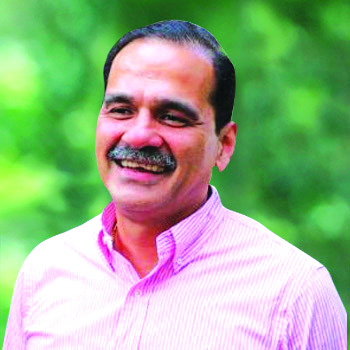Liberal arts students learn to use imagination, experiences and sensitivity to create new knowledge, learn to empathise to understand human sensitivities, and learn for the joy of learning writes Sanjay Padode

The industrial age was dominated by concepts of division of labour and specialisation. This was the most efficient strategy for achieving scale and efficiency in the production of goods and services. The work environment was hierarchical and driven by working in shifts in which cooperation between different sets of human resources played a critical role. It was always about a few humans leading many and instructions from the top played a key role in driving the workforce.
Managers were trained by the education system to master the art of giving instructions, and the workforce was trained to follow instructions and execute. Innovation and development of products were the function of research and development, constraining the human mind to concentrate on project completion.
With the advent of the information age, hierarchies were flattened and a lot of work done previously by humans began to be done by machines. Human resources were developed to instruct machines that have no cognitive capabilities but can perform repetitive tasks efficiently. This fuelled the growth of STEM (science, technology, engineering and math) education. Capability to understand the use of machines coupled with knowledge to design systems and machines for efficient work delivery became necessary for successful project execution.
In turn, education systems evolved to deliver just that. Ideation and imagination was confined to the creative arts. Education systems and curricula evolved to apply scientific principles of quantification and measurement in every field and, the theory of knowledge took a back seat.
However, standardisation and globalisation became omnipresent and with the advent of the Internet the knowledge required to produce goods and services became easily accessible. The arbitrage in cost of living worldwide led to offshoring of work. These opportunities became available to all making the world a more competitive place. The new efficiencies added to the prosperity of the world but introduced volatility, uncertainty, complexity and ambiguity in the workplace. Technologies started to evolve rapidly, and markets became more dynamic.
Differentiating products and services started to emerge as a challenge. All this change suddenly created a huge gap between education outcomes focussed on development of the left brain, and the emerging right brain needs of society. Critical thinking and problem-solving gained prominence in education. ‘Innovate or die’ emerged as the new mantra for survival. Legacy education systems designed to develop instruction followers began to feel the heat, and evolution of education became inevitable.
The word ‘liberal’ has many connotations and is better understood in the Western context. Liberation from laws, customs, and strict norms of society through protests and agitations, defying set norms started to become a way of life as societies continued to democratise. Since their genesis Asian and African societies had been quite liberal in their way of life, but their liberal sense was distorted by westernisation during the colonisation era. Here the context of ‘liberal’ is education whose beneficiary is the learner. Liberal education empowers learners to choose subjects across disciplines and curate learning pathways best suited for them.
While streamed science and technology education emerged as prime choice of aspirants in education, study of the liberal arts and humanities continued to remain popular as they enabled freedom of expression and ease of communication. Those aspiring to pursue these subjects were better able to understand the broader context in which societies progressed and developed. Liberal arts students are more enabled to think for themselves, learn to use imagination, experiences and sensitivity to create new knowledge, learn to empathise to understand human sensitivities, and learn for the joy of learning.
The world has now progressed far beyond machines led by linear instructions, to machines that can think and display human capabilities. Artificial intelligence coupled with machine learning algorithms is fast replacing skilled humans in workplaces around the world. These changing times tending towards singularity have generated the demand for professionals who can empathise humanely, think and imagine freely, execute entrepreneurially, ideate and innovate to take on new challenges and opportunities.
In these changing circumstances, the panacea seems to be ‘liberal education’ which enables learners to make choices and curate customised learning pathways. This will surely challenge educators to innovate credentials that are appropriate and acceptable to the contemporary world. However with imagination and ideation, these challenges will be overcome.
Liberal education will allow learners to mix humanities, law, management, art, science and technology blending knowledge, developing curiosity, firing up imaginations, and developing solutions needed in the 21st century. Indeed it will become the dominating factor in determining employability and success in workplaces.
(Sanjay Padode is president of Vijaybhoomi University, Karjat, Maharashtra)























